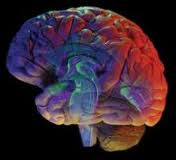Cognitive therapy in help-seeking young people at risk for psychosis did not reduce the likelihood of transitioning to psychosis, but it did reduce the frequency and intensity of symptoms in those who transitioned during the course of a multisite, randomized controlled trial.
The findings suggest that antipsychotics should not be used first line for those in an at-risk mental state, and they have important implications for a proposal, currently under consideration, to incorporate a new psychosis risk syndrome into the fifth edition of the Diagnostic and Statistical Manual of Mental Disorders (DSM-5) scheduled for publication in May 2013, according to Anthony P. Morrison, Ph.D., professor of clinical psychology at the University of Manchester (England), and his colleagues.
The findings were reported April 5 online in the British Medical Journal.
The overall rate of transition to psychosis among 288 study participants was 8% within 12 months. The rate was about 7% among 144 patients randomized to receive cognitive therapy and monitoring and 9% for 144 patients randomized to receive monitoring alone. The treatment effect was shown on logistic regression to be nonsignificant (continuation odds ratio, 0.73).
The severity of psychotic symptoms in those in the cognitive therapy group who transitioned was significantly reduced, compared with those in the control group who transitioned (estimated between-group effect size, -3.67), based on the Comprehensive Assessment of At-Risk Mental States (CAARMS) scores, the investigators said (BMJ 2012 April 5 [doi:10.1136/bmj.e2233]).
CAARMS scores indicated there was no significant difference between the groups in the level of distress associated with psychotic symptoms, nor was any difference seen between the groups with respect to secondary outcomes – including depression, social anxiety, and quality of life – as measured using the global assessment of functioning. The rates of these outcomes did, however, decline over time in both groups.
Study participants included patients aged 14-35 years who were enrolled at five sites throughout the United Kingdom after CAARMS scores indicated that they had an at-risk mental state because of brief limited intermittent psychotic symptoms, attenuated psychotic symptoms, or state plus trait factors. About two-thirds of the participants had at least one DSM-IV diagnosis at study entry, including major depressive disorder in 33.7%, dysthymic disorder in 7.5%, panic disorder with agoraphobia in 6.4%, panic disorder without agoraphobia in 13.5%, social phobia in 11.2%, specific phobia in 10.9%, generalized anxiety disorder in 8.6%, obsessive compulsive disorder in 7.5%, and posttraumatic stress disorder in 2.2%.
Those allocated to receive cognitive therapy were offered weekly sessions over the course of 26 weeks, with up to four booster sessions provided during 12-24 months of follow-up. These patients received a mean of 9.11 sessions lasting an average of 1 hour each.
Both the treatment group and control group received monitoring that represented “an enhancement over routine care since it aimed to provide warm, empathic, and non-judgmental face to face contact and supportive listening; signposting to appropriate local services for unmet needs and crisis management when required,” Dr. Morrison and his fellow investigators noted.
The findings are consistent with those from other clinical trials involving people in an at-risk mental state, and they show that cognitive therapy results in statistically and clinically meaningful improvement in severity of psychosis symptoms in those who transitioned, they said.
The findings, including the low overall transition rate, raise important questions about incorporating a psychosis risk syndrome into the DSM-5, including questions about its utility as a predictive concept and also about the likely cost-benefit ratio of providing treatment for this group, Dr. Morrison and his associates argued, adding that, while the at-risk mental state paradigm has been of great benefit in developing thinking about prevention, the current findings suggest that more research and refinement are needed.
Future research should examine the developmental processes involved in both transition to psychosis and resilience within populations in an at-risk mental state; it seems “highly premature” to introduce a diagnostic category into the DSM-5 on the basis of risk of psychosis, they said.
This is particularly true given the low transition rate and high potential for natural recovery demonstrated in this study, they added.
“This population is clearly help seeking and distressed, with the majority meeting criteria for a diagnosable emotional disorder. Therefore, future clinical trials should consider provision of problem led, benign, and parsimonious interventions that target presenting difficulties (be they anxiety disorders, depression, or distressing attenuated psychotic experiences) rather than prevention of transition to first episode psychosis in itself,” Dr. Morrison and his associates wrote.
As for immediate clinical implications, the findings highlight the benefits of cognitive therapy for reducing the severity of psychotic experiences – without the use of antipsychotic drugs.
The low rate of transition to psychosis in both the treatment and control groups in this study – and the recovery from psychosis and affective symptoms among those in both groups, is “clearly an important and optimistic message to convey; both for young help seeking people meeting the criteria for being in an at risk mental state and for clinicians in contact with this population.
“It should encourage a normalizing, non-catastrophic perception on their psychotic experiences, and any treatment should largely be needs driven on the basis of what problems are presented and prioritized by service users; this is something that cognitive therapy is suited to, given its collaborative, problem oriented nature,” they said.
Active monitoring also might be of benefit and would be benign, easy to implement, and consistent with guidelines, Dr. Morrison and his coworkers added.
Given the findings of this study, and given the adverse effects associated with antipsychotics, the investigators suggest that antipsychotics not be delivered as a first-line treatment for those meeting the criteria for being in an at-risk mental state.
This study was supported by the UK Medical Research Council and the UK Department of Health. None of the authors had disclosures to report.


0 Comments